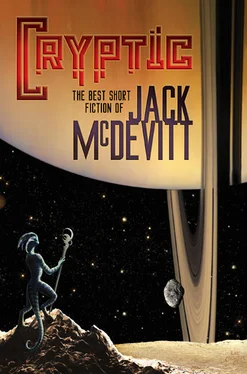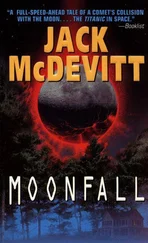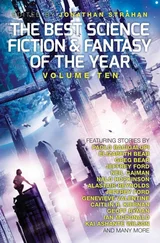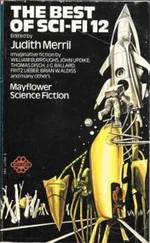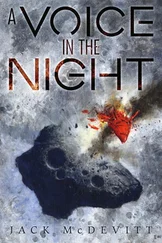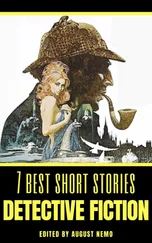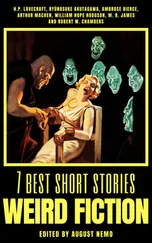Джек Макдевитт - Cryptic - The Best Short Fiction of Jack McDevitt
Здесь есть возможность читать онлайн «Джек Макдевитт - Cryptic - The Best Short Fiction of Jack McDevitt» весь текст электронной книги совершенно бесплатно (целиком полную версию без сокращений). В некоторых случаях можно слушать аудио, скачать через торрент в формате fb2 и присутствует краткое содержание. Издательство: Subterranean Press, Жанр: Фантастика и фэнтези, на английском языке. Описание произведения, (предисловие) а так же отзывы посетителей доступны на портале библиотеки ЛибКат.
- Название:Cryptic: The Best Short Fiction of Jack McDevitt
- Автор:
- Издательство:Subterranean Press
- Жанр:
- Год:неизвестен
- ISBN:нет данных
- Рейтинг книги:3 / 5. Голосов: 1
-
Избранное:Добавить в избранное
- Отзывы:
-
Ваша оценка:
- 60
- 1
- 2
- 3
- 4
- 5
Cryptic: The Best Short Fiction of Jack McDevitt: краткое содержание, описание и аннотация
Предлагаем к чтению аннотацию, описание, краткое содержание или предисловие (зависит от того, что написал сам автор книги «Cryptic: The Best Short Fiction of Jack McDevitt»). Если вы не нашли необходимую информацию о книге — напишите в комментариях, мы постараемся отыскать её.
Cryptic: The Best Short Fiction of Jack McDevitt — читать онлайн бесплатно полную книгу (весь текст) целиком
Ниже представлен текст книги, разбитый по страницам. Система сохранения места последней прочитанной страницы, позволяет с удобством читать онлайн бесплатно книгу «Cryptic: The Best Short Fiction of Jack McDevitt», без необходимости каждый раз заново искать на чём Вы остановились. Поставьте закладку, и сможете в любой момент перейти на страницу, на которой закончили чтение.
Интервал:
Закладка:
Albert Sills was beaming. He wore a vest that portrayed the Earth on a navy blue background of stars. It was his way of signaling an Event. “Most scientists count themselves lucky if they make one significant discovery in a lifetime.” He gazed out across the audience. “Professors Kristi Lang and Joel Dayan have each done that already. She has found a type of star that nature cannot manufacture. That might be synthetic. He has taken the first pictures and spectra of Earth-sized planets orbiting other stars. All these planets are barren. Her results suggest that intelligent life exists in the cosmos. His results suggest that extraterrestrial life is extremely rare. Isn’t science wonderful?! ” When the laughter subsided, he looked toward them, standing off to one side. “This is their day, Doctors Lang and Dayan, please tell us what you have found.”
Joel raised the microphone for Kristi and it promptly emitted a deafening squeal. He fiddled with the controls, and a second try brought it quietly within range. “That’s why a skilled instrumentalist is so essential for every astronomy team,” she began, setting a glass of water atop the lectern. He laughed with the reporters but looked nervous, so she gave him a broad smile and faced the media. The New York Times and Science correspondents had been tipped off, and were sitting on the edges of their seats. They get it , she thought. She savored the moment, gloriously happy, for herself and for Greg. She almost felt his presence in the room. “Welcome,” she said. “I’m pleased that so many of you are here. We want to gratefully acknowledge our co-author, Ms. Ana Vassileva, who couldn’t be here today. She is spacewalking at a geosynchronous altitude right now. Ana manages the health and safety of our instruments, and has gathered some of the data for our work. We’re going to take fifteen minutes to summarize our discoveries, and then we’ll be happy to answer questions.” The corkscrew appeared on the holoscreen beside her.
“Greg Cooper sifted through a billion rejected brown dwarf candidates from my doctoral thesis. Only members of our own solar system move enough, relative to the background stars, to be easily detectable in a few days. That’s why I rejected all rapidly-moving star-like objects. They must be asteroids or Kuiper Belt objects. Greg re-observed them, and all the other rejects that varied. One, and only one, of my rejects, displays the spectrum of a brown dwarf. And it turns out, it is a true brown dwarf. Greg re-observed it every month for almost two years. The twenty-two points of the corkscrew that you see on the screen plot the apparent path of this object across the sky. A single turn of the corkscrew has 1/30 the apparent diameter of the full moon. That’s huge.” She took a deep breath. “The only way that can be true, ladies and gentlemen, is if the brown dwarf is a binary companion—” she paused—“of the Sun.”
The audience sat stunned. Somebody murmured in back. Shocked expressions appeared on the reporters’ faces.
She sipped her water. “The brown dwarf’s orbital motion around the Sun carries it continuously in one direction. The position from which we view it varies cyclically over one year as the Earth moves around its orbit. Combining those two motions produces the helical path in the sky. The apparent size of the corkscrew helix places our newfound neighbor about one hundred times farther from the Sun than Neptune: five hundred billion kilometers away. That’s a pretty long walk. But it’s still a hundred times closer than the nearest star.”
Hands were going up all over the conference hall. The reporter from Science didn’t wait to be recognized. “If it’s so close, why hasn’t anyone discovered it before?”
“There are five reasons,” Kristi said. “Our companion is almost a million times less luminous than the Sun. It’s three thousand times further away. We can never see it in the same spot twice because it takes 150,000 years to complete one orbit. For the past eight thousand years, it’s been moving through Sagittarius, the most crowded part of the sky. And finally, it’s eight times cooler than Sol, so it only emits infrared light. That’s why nobody’s ever noticed our cool neighbor until recently. Until Greg Cooper did.” She took another sip of water, and touched her e-pad.
“We’ve measured the brown dwarf’s radial velocity. It’s wobbling back and forth with perfect periodicity every seven days.” A sinusoidal curve with data points and error bars replaced the corkscrew on the holoscreen. “This means that a significant mass must be orbiting our neighbor, tugging it back and forth.”
A hand went up. “Are we talking about a planet , Professor Lang?”
“One second, please, and I’ll explain. Dr. Dayan’s state of the art instrumentation permits us to measure the object’s speed as it orbits the brown dwarf. That helps us to pin down the masses of our two discoveries. The brown dwarf is forty times the mass of Jupiter. If it were eighty Jupiters, it would fuse hydrogen and be visible to the naked eye as a blood-red star.
“The orbiting mass is three times that of the Earth. But it’s divided.” She looked at the reporter and at her audience. “To answer your question: No, we do not have an orbiting planet.” She paused. “We have two .”
“Ladies and gentlemen, we apparently have a miniature solar system, just eighteen light-days away.” The hands had gone down, and the excitement had turned to stunned silence. “We thought you would like to see them. Dr. Dayan?”
Joel touched his e-pad and two fuzzy crescents appeared on the screen. “Dr. Lang and I spotted these in the first image we took. At first I was certain that the double image was an internal reflection in the coronagraph. We rotated the optics by 90 degrees, but the crescents didn’t budge. They are real, nearly identical twins. We are seeing both night and day on each world’s surface, hence the crescent shapes.” Another touch and two much sharper crescents filled the screen. “Several hours of focusing the instruments brought us to where we could take a crisp image every minute. Concatenating them gives us the first movie of twin terrestrial worlds, which we’ll now see.”
The planets came alive, circling their common center of gravity. They orbited the brown dwarf in perfect lock step. On one world, cloud masses swirled over continents, islands and oceans. The second planet was totally enshrouded in clouds. Flashes that could only be lightning were visible on its night side. Many of those present broke into spontaneous applause. Joel smiled and nodded. “During the last few hours of our observing run, Dr. Lang measured each world’s spectrum, and I now ask her to describe what she found.”
Kristi returned to the microphone. “Humanity has the technology today to send a robotic spacecraft to our neighboring brown dwarf star and its twins. If we use the Clarke cable as a whip, we could be there in twenty years. And we are going to go. Let me show you why.” The holoscreen displayed another pair of spectra. “The ocean world has water in its atmosphere, of course. There’s oxygen, ozone, and methane, too.” She stopped, took a deep breath, and thought again of Greg. I wish you were here.
“The spectrum also shows a distinctive feature here that can only be produced by chlorophyll. The other planet, the cloudy one, shows nothing but carbon dioxide and nitrogen. The ocean world is alive. ”
The academics in the audience sat spellbound. Many of the reporters were already filing stories with their e-pads.
“Life has taken hold on a planet just eighteen light-days from Earth. It has failed on the twin planet right next to it. If we choose to do so, we can learn why life established itself on one and not on the other. And then, perhaps, we will understand how life got started on Earth.”
Читать дальшеИнтервал:
Закладка:
Похожие книги на «Cryptic: The Best Short Fiction of Jack McDevitt»
Представляем Вашему вниманию похожие книги на «Cryptic: The Best Short Fiction of Jack McDevitt» списком для выбора. Мы отобрали схожую по названию и смыслу литературу в надежде предоставить читателям больше вариантов отыскать новые, интересные, ещё непрочитанные произведения.
Обсуждение, отзывы о книге «Cryptic: The Best Short Fiction of Jack McDevitt» и просто собственные мнения читателей. Оставьте ваши комментарии, напишите, что Вы думаете о произведении, его смысле или главных героях. Укажите что конкретно понравилось, а что нет, и почему Вы так считаете.
